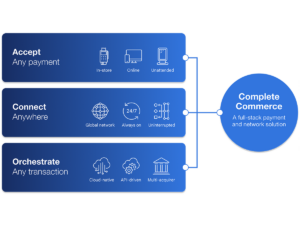You’d be hard-pressed to find anyone who correctly predicted the outcome of 2020, and while TNS CEO Mike Keegan made many correct robocall industry predictions earlier this year, no one could’ve imagined how they would manifest.
The COVID-19 pandemic made a huge impact on robocalling, albeit an unexpected one. Due to the widespread shutdown of global call centers, unwanted robocalls actually dropped by 15 percent in the first half of 2020 compared to the same period in 2019. That being said, as of the publishing of our September 2020 1H Robocall Investigation Report, more than 100 billion unwanted calls had been placed in a 12-month period.
Through the end of November, there were 257,809 reports of COVID-19 scams to the FTC, resulting in over $190 million in total fraud loss. Although there was a drop in robocalls early in the year, scammers quickly pivoted and seized on consumer fear and confusion to launch a barrage of pandemic scams around stimulus checks, fake cures and test kits, health insurance, student loans and robocalls targeting seniors.
Speaking of seniors, we released survey results in April that found the majority (53%) of US senior citizens believed robocallers tried to scam them out of personal information in 2019 and 47 percent reported that they were targets of financial scams in the same year. 89 percent of seniors also said they receive at least one robocall per week, while 56 percent said they receive at least seven per week.
After the COVID-19 pandemic, the next most crucial event for Americans was the 2020 General Election. Robocallers didn’t hesitate to capitalize on the election, starting as early as the primary election season beginning in February. Compared to a typical week, almost every state saw a rise in robocall activity between 150 percent and 600 percent the week leading up to their primary voting date. The numbers spiked again as we arrived at Election Day. During election week, each state averaged 384,000 political robocalls compared to 247,000 just the week before. These numbers were partially due to the now-infamous robocall that told countless citizens in swing states to “stay home, stay safe” on election day.
One of the key predictions TNS had going into 2020 was the wide impact the TRACED Act – signed on December 30, 2019 – would have on the telecom industry. The Act aims to provide the FCC and law enforcement officials with new abilities to quickly combat scammers and reduce fraudulent robocall schemes. As part of this law, voice service providers are required to either upgrade their non-IP networks and implement STIR/SHAKEN by June 30, 2021, or work to develop a non-IP authentication solution. As a result, carriers have been busy working with solution providers to implement the standard. Due to the economic strain of COVID-19, the STIR/SHAKEN requirements were loosened for smaller voice service providers who were granted a two-year extension, with a requirement to continue working toward robocall mitigation solutions. The negative side effect of this ruling is that scammers continue to spoof smaller VoIP carrier numbers. In fact, we’ve identified more than 90 percent of scam and fraudulent calls come from numbers not owned by Tier-1 carriers.
While the TRACED Act hasn’t progressed as we expected, it’s great to see that the FTC and many attorneys general around the country have gotten more aggressive about the fight to end negative robocalls. The Michigan AG’s work to combat voter suppression robocalls was especially impressive as she brought felony charges against two political operatives in an investigation. This was a great demonstration of local officials working with other states to protect their citizens from voter suppression phone calls.
A trend we’ve seen in recent years is that consumers are wary to pick up their phones due to the increasing number of robocalls they receive. This behavior has frustrated legitimate call originators who are seeking improved customer engagement solutions. This tendency has also caused bad actors to pivot to sending robotexts. Some of the text message scams we’ve seen in 2020 are based on common phone or email scams, however, the scammer is not trying to have a text conversation, but rather wants the victim to click a link by using a topical current event like an election, COVID-19 or a free prize. Because text messaging is so ingrained in everyday life, it will be increasingly difficult for consumers to tackle this issue.
As COVID-19 continues, next year will surely have its own surprises in store for the telecom industry. Stay tuned for our next blog post as we take a look into our 2021 crystal ball.
Paul is Vice President of Product Management at TNS with specific responsibility for the development and management of its Communication Market products and services across both core signaling and database services, as well as mobility solutions.






